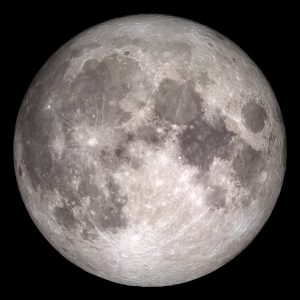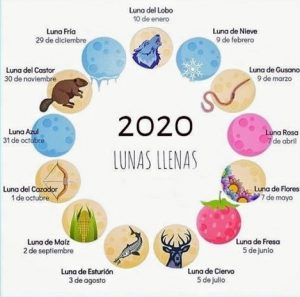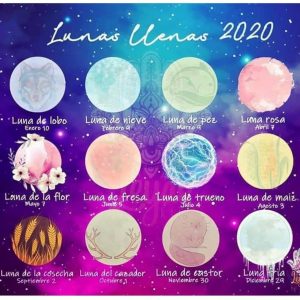Did you know that this 2020 we superlunas, blue Moon, moons, and lunar eclipses?
Indeed, a good reason to look up at the sky and keep an eye out for these phenomena or at least, is what the experts say.
But there is more, Well, every moon of the year, receives a characteristic name and we will tell you the when and why of each of them.
It was the ancient Native American Indians who gave each moon its name. How about? Wait to meet them and tell us if you like them.

Our ancestors, a lot of cultures, even our parents and grandparents and those who work the fields, they know that looking at the sky and understanding it is very important.
The Mayan calendar contemplated 13 moons 28 days, as well as chinese. The woman's period, the tides, everyone receives the lunar influx.
The Moon of the 1 from January to 30 de junio de 2020.
3 from January – Crescent quarter
10 from January – Wolf full moon.
If you think the new decade starts in 2020, this is the first full moon of the decade.
The January full moon was known as the Full Wolf Moon to some Native American tribes because it was the time when hungry wolves stayed near human camps in search of whatever debris they could find..
10 from January – lunar eclipse.
17 from January – Last quarter.
24 from January – New Moon.
It leads to the start of the Chinese New Year. This year 2020 is he 4708 Flat Yang de Metal.
2 February – Crescent quarter.
9 February – Super Full Snow Moon.
Supermoon is the term we apply when the moon is full at its closest approach to Earth..
In those conditions, the full moon may appear a 7 percent larger and a 30 percent brighter than it appears farther from Earth.
Many Native Americans knew the February full moon as the snow moon or the full snow moon., referring to February as the month when the heaviest snowfalls of the year tend to fall.
15 February – Last quarter.
23 February – New Moon.
2 March – Crescent quarter
9 March – Super Worm Moon; pico 1:48 p.m.
We already know what a Supermoon is.

The March full moon is known as the Worm Moon, not because of some new discovery about life on the lunar soil, but for a much more realistic reason. The name of the third full moon of the year originated with the Native Americans, that they knew very well that, at the time of the full moon, the ground had thawed to the point that worms would rise to the surface when the rain fell.
16 March – Last quarter.
24 March – New Moon.
1 of April – Crescent quarter.
8 of April – Super Pink Moon; pico 3:35 a.m.
Native American peoples knew the April full moon as the pink full moon because it rises above a landscape of wild pink flowers, one of the first wildflowers to bloom in spring. Native Americans also knew the April full moon as the egg moon, the moon of fish and the moon of the grass that sprouts, for other important and recurring natural events at this time of year.

14 of April – Last quarter.
23 of April – New Moon.
30 of April – Crescent quarter.
7 of May – Super Flower Moon; pico 6:45 a.m.
Native Americans knew the May full moon as the full flower moon, due to its coincidence with the blooming of most spring wildflowers. Other Native American names for the full moon in May were milk moon, mother moon and corn plant moon.
14 of May – Last quarter.
22 of May – New Moon.
30 of May – Crescent quarter.
5 of June – Strawberry full moon; pico 3:12 p.m.
Native Americans across the Northeast and Mid-Atlantic knew the June full moon as the strawberry full moon because it comes at the height of the strawberry picking season. For pre-colonization Native Americans, they were wild strawberries, that still grow throughout Pennsylvania and beyond. To West, the Choctaws knew the June full moon as the blackberry full moon; the Lakota, berry full moon; los Potawatomi, the full moon of the turtle and the omaha, “when the buffalo bulls hunt the cows”. In ancient European cultures, June's full moon was known as the honeymoon (honey, no romantic honeymoon), the hot moon, the hay moon, the bad moon , the pink moon, the lovers moon and, as there were strawberries in Europe too, strawberry moon.
13 of June – Last quarter.
21 of June – New Moon.
21 of June – Annular solar eclipse, with the moon blocking most of the Sun's light and making the Sun look like a ring. It will be visible from parts of the African continent, including the Central African Republic, the Congo and Ethiopia; Pakistan; India; and china.
28 of June – Crescent quarter.
We have half a year of moons ahead. Do you want to know them all? Leave us your opinion in comments😘





